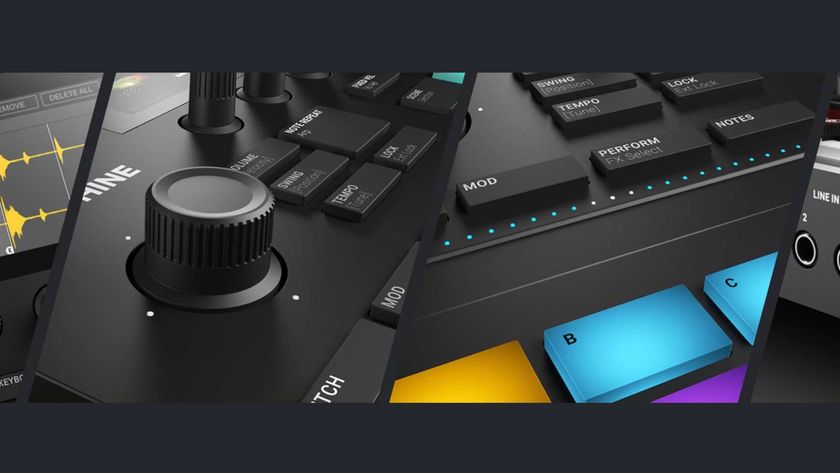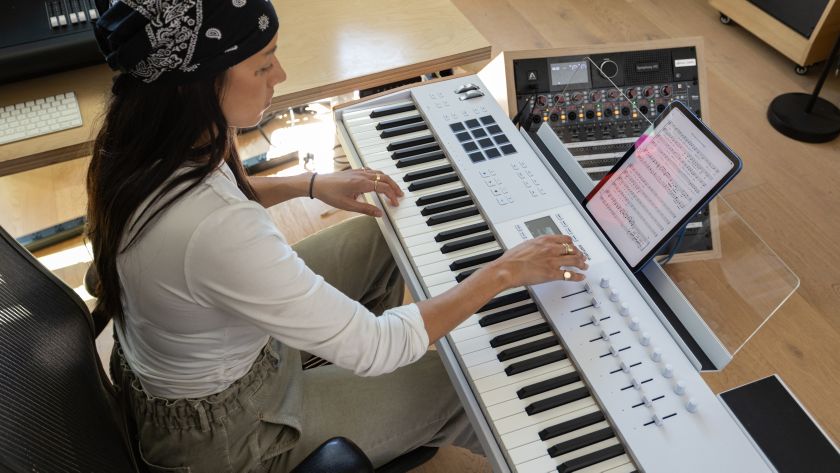How to play the blues scale on your piano or MIDI keyboard
The blues scale - a scale you need to know
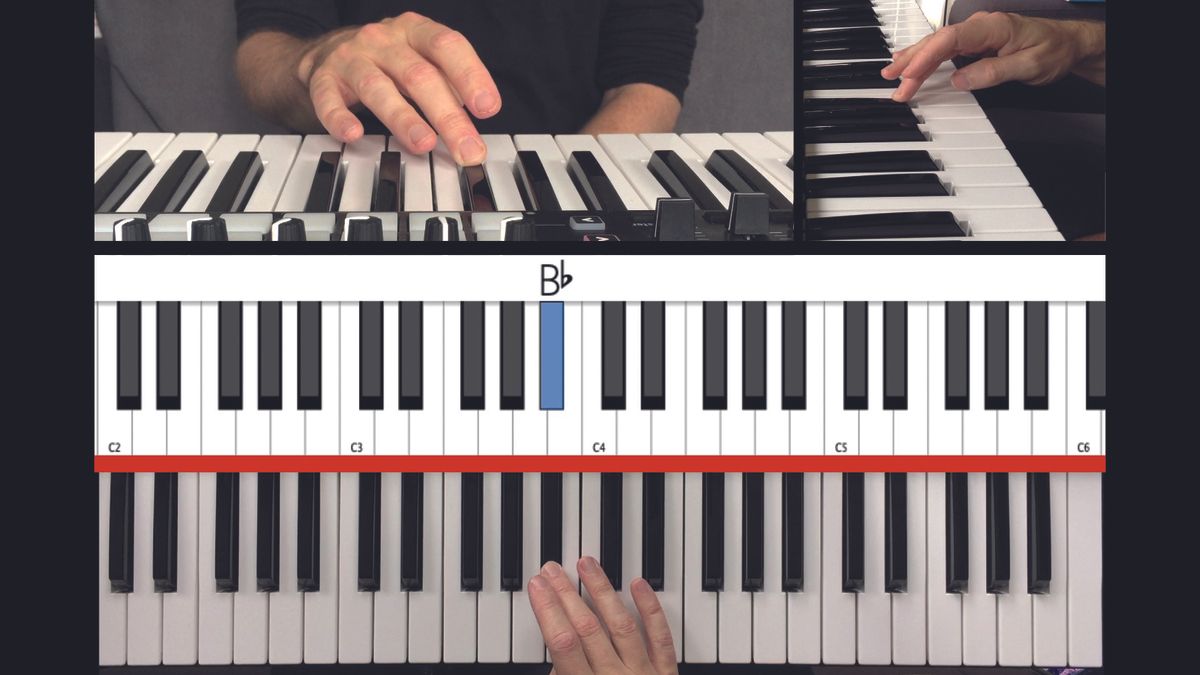
You've probably heard people talking about the blues scale - and you probably have a pretty good idea of how it sounds - but how do you actually play it on your piano, digital piano or MIDI keyboard? Like this...
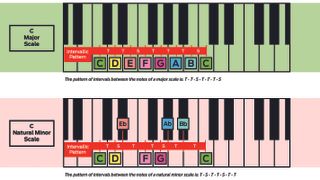
Step 1: The blues scale is a variant of the minor pentatonic scale, which in turn is a cut-down version of the natural minor scale. Just like a major scale, a natural minor scale is defined by its own specific pattern of intervals between the notes – T-S-T-T-S-T-T, where T stands for (whole) Tone and S stands for Semitone.
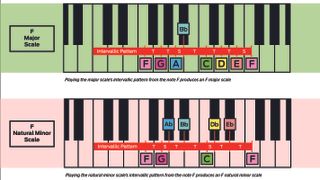
Step 2: We’re going to learn the F blues scale, simply because it’s a nice one to play. So let’s start off by applying that natural minor intervallic pattern to the key of F to produce an F minor natural scale. Starting on F, this gives us F, G, Ab, Bb, C, Db, Eb and F.
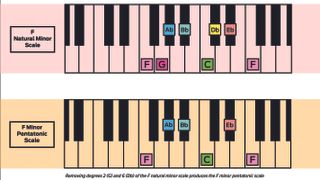
Step 3: That’s too many notes, so we need to remove a couple to produce an F minor pentatonic, or five-note scale. We do this by removing the 2nd and 6th degrees of the natural minor scale. So we get rid of G and Db– degrees 2 and 6 – to leave just five notes remaining – F, Ab, Bb, C and Eb.
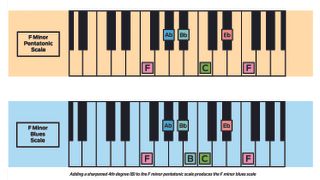
Step 4: For an F blues scale, we need one last tweak: a sharpened fourth degree. This means we take the fourth degree of the scale, raise it in pitch by one semitone and add this note to the scale. The fourth degree of the F minor scale is Bb, so we need to chuck a B natural into the mix. This gives us F, Ab, Bb, B, C and Eb - the F blues scale.
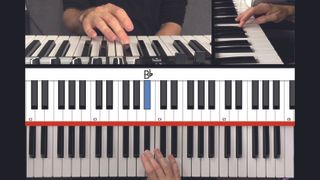
Step 5: To play the scale, start with your thumb on an F key and play Ab with finger 2 and Bb with finger 3. Tuck your thumb under to hit B, then play C with finger 2, Eb with finger 3 and F with finger 5. So that we can apply it to any key, the formula for this scale is 1-3-4-4#-5-7, where the numbers represent the degrees of the natural minor scale.
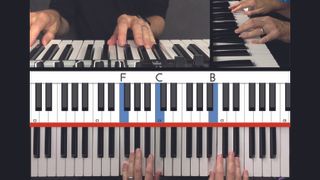
Step 6: The blues scale is fantastic for improvised soloing, especially over power chords in the left hand. As power chords contain no third, they can be either major or minor, so they’re great to jam over with the blues scale. Try with your left thumb on C and finger 5 on F for an F power chord as you play the scale with the right hand.
Get the MusicRadar Newsletter
Want all the hottest music and gear news, reviews, deals, features and more, direct to your inbox? Sign up here.
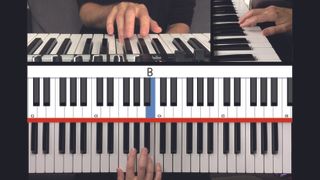
Step 7: Here’s a handy blues riff exercise. Sticking to the key of F minor, play the first five notes of the F blues scale as a five-finger scale, but instead of starting on the thumb, start by playing the B key with finger 4, move up to 5 on C, then play all five fingers down through B, Bb and Ab to F and back up, repeating the loop a few times.

Step 8: Once comfortable with this, we can work it up into an actual blues lick. Now when you play down to the thumb on F, instead of working back up through all five fingers, miss out fingers 2(Ab) and 3(Bb) and jump straight to finger 4 on the B. Play up to C on finger 5, then back down through all five fingers to the thumb on F again.
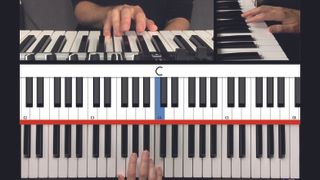
Step 9: From the thumb, jump to 4 on B again and repeat, jumping up from and playing down to the F each time, like drumming your fingers – as speed increases, so will the strength of fingers 4 and 5 until you can use this lick in your playing almost without thinking.
Computer Music magazine is the world’s best selling publication dedicated solely to making great music with your Mac or PC computer. Each issue it brings its lucky readers the best in cutting-edge tutorials, need-to-know, expert software reviews and even all the tools you actually need to make great music today, courtesy of our legendary CM Plugin Suite.

